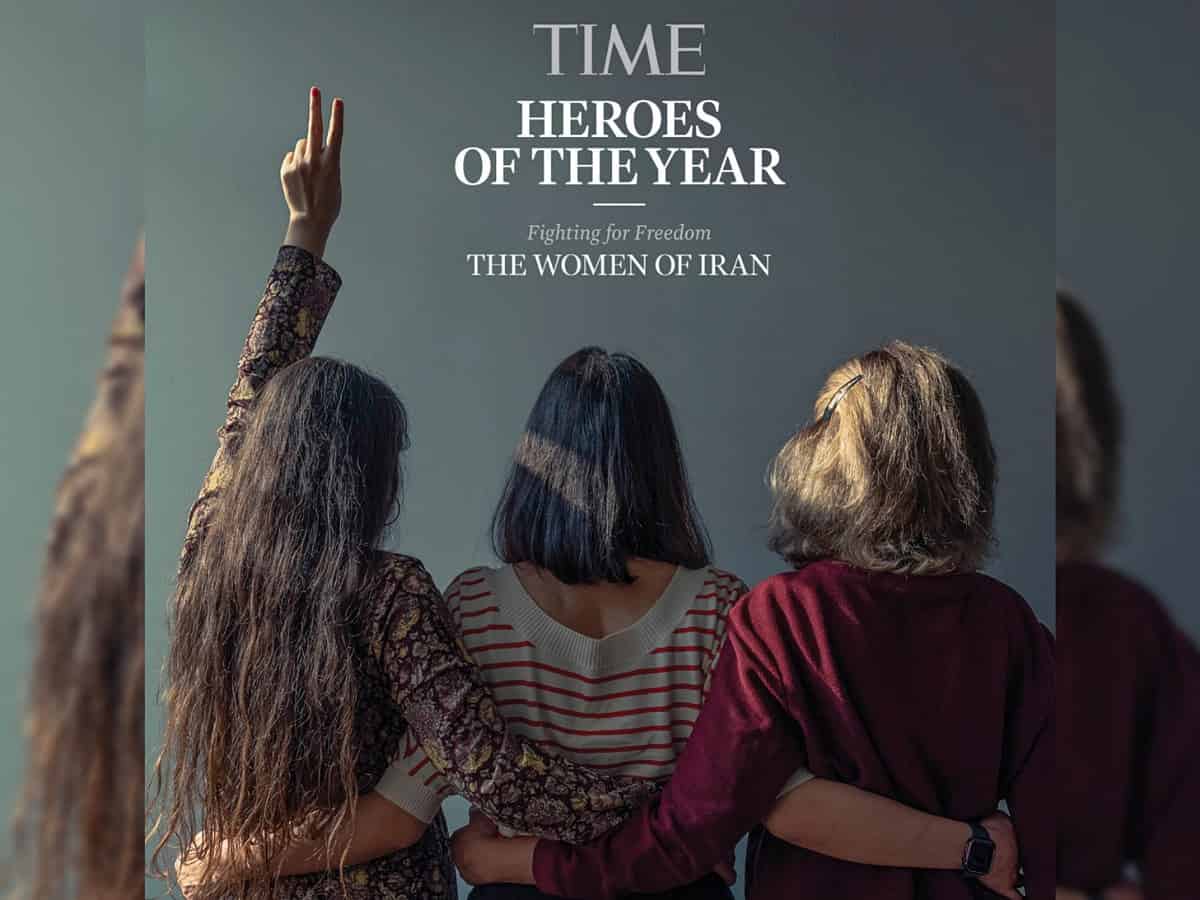
American news magazine Time on Wednesday named Iranian women its 2022 “heroes of the year” for leading mass protests across the country over the death of 22-year-old Mahsa Amini.
The New York-based magazine has been naming them “person of the year” for decades, but in recent years has also begun naming “heroes” for their contributions to humanity.
This year, the magazine published on its cover a picture of three unveiled Iranian women locking arms in defiance of the country’s rulers.
Iranian-American writer Azadeh Maveni, in her tribute article for Time magazine, stresses the importance of women’s role in the country’s past protests, while also highlighting how different though similar the current protests are.
“These younger women are now in the streets. The movement they’re leading is educated, liberal, secular, raised on higher expectations, and desperate for normality: college and foreign travel, decent jobs, rule of law, access to the Apple Store, a meaningful role in politics, the freedom to say and wear whatever.”
Moaveni wrote in TIME
Moreover, she noted that the women are still undeterred to know the consequences such as forced detention by Iran’s military guards, torture, and other retaliatory tactics for speaking out.
“I can only conclude that when a generation’s aspirations for freedom appear tantalizingly within reach, the more humiliating the remaining restrictions seem, and the less daunting the final stretch of resistance feels,” wrote Azadeh Moaveni.
Iran has been rocked by sweeping protests since September 16, over the death of a 22-year-old woman, Mahsa Amini, in the custody of Iran’s morality police.
Her death has since ignited anger over several issues, including the restrictions imposed on personal freedoms and strict rules regarding women’s clothing, as well as the living and economic crisis that Iranians suffer from, not to mention the strict laws imposed by the regime and its political and religious composition in general.
Women are the backbone of the protests
It is noteworthy that women protestors topped the scene in Iran after some women set their headscarves on fire, chopped off their hair during demonstrations against the imposition of the hijab.
Numerous videos on social media showed Iranian women removing and burning their headscarves in protest. The Kurdish slogan “Woman, Life, Freedom” became the rallying cry of the protesters.
Women are legally required to wear the hijab in Iran
Since the 1979 Islamic Revolution in Iran, women have been legally required to wear “Islamic” modest clothing.
In practice, this means that women must wear a chador, a full-body abaya, or a headscarf and coat that covers their arms.
In recent years, Iran has witnessed several campaigns against the compulsory hijab, but the Iranian morality police launched a campaign against women accused of not complying with the dress code, prompting opponents of this trend to demand action.
In 2017, dozens of women publicly took off their headscarves in a wave of protests, the authorities adopted tougher measures.
In July video spread on social media of a woman standing in front of a morality police vehicle calling for the release of her daughter, and the veiled woman continued to hold on to the vehicle even after it set off before running away from it after increasing its speed.



